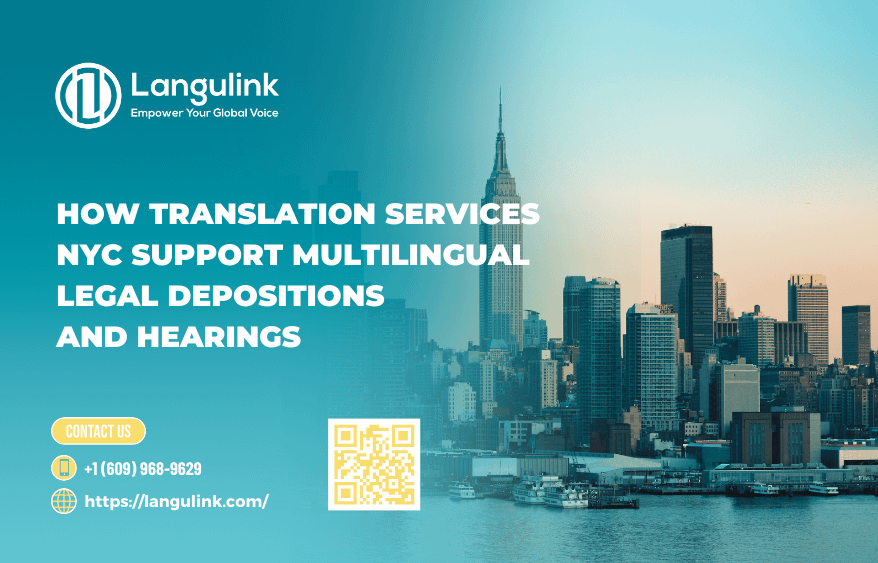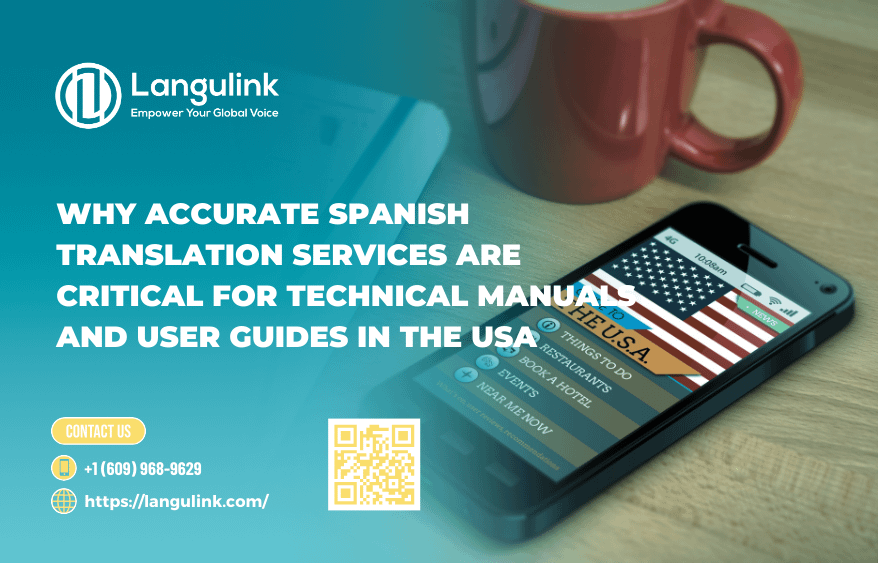Table of Contents
How Medical Document Translation from Chinese to English Supports Clinical Trials in the USA
In the globalized healthcare industry, the demand for medical document translation from Chinese to English has surged, particularly in clinical trials conducted in China for submission to the United States.
This process is critical for ensuring compliance with U.S. regulatory standards, facilitating cross-border collaboration, and safeguarding patient safety.
Moreover, as English remains one of the most popular languages to translate worldwide, professional translation services play a pivotal role in bridging the gap between Chinese research and U.S. regulatory requirements.
This article explores the significance of medical document translation, its challenges, and how professional services like Langulink can ensure precision and efficiency.
The Importance of Medical Document Translation in Clinical Trials
Why Medical Document Translation from Chinese to English Is Crucial
China has become a global leader in pharmaceutical research, with many clinical trials originating there.
However, for these trials to be accepted in the United States, all associated documents must be translated into English, one of the most widely used languages for international communication. Key documents requiring translation include:
- Informed consent forms: To ensure participants understand the trial’s risks and benefits.
- Study protocols: Outlining the trial’s objectives and methodologies.
- Regulatory submissions: Required for FDA approval.
- Patient records: Essential for accurate data analysis.
Accurate medical document translation from Chinese to English is vital to avoid misunderstandings, regulatory delays, and potential risks to patient safety.
The Role of English as a Global Language in Clinical Trials
English is not only one of the most popular languages to translate worldwide but also the primary language for regulatory submissions in the United States.
Medical translation services into English ensure that trials conducted in China can meet U.S. standards, enabling seamless collaboration between researchers, sponsors, and regulatory agencies.
Challenges in Translating Medical Documents from Chinese to English
Complex Medical Terminology
Medical documents are filled with technical jargon that often lacks direct equivalents between Chinese and English. Translators must have expertise in both languages and a deep understanding of medical terminology to ensure accuracy.
Cultural and Linguistic Nuances
Certain medical concepts or phrases may be interpreted differently in Chinese and English. Translators must adapt these nuances while maintaining the original meaning, ensuring the documents are both accurate and culturally appropriate.
Regulatory Compliance
The U.S. Food and Drug Administration (FDA) has stringent requirements for clinical trial translation documentation. Translators must ensure that all documents meet these standards, as errors could lead to delays or rejection of the trial.
How Medical Document Translation Supports Clinical Trials in the USA
Ensuring FDA Compliance
The FDA requires all clinical trial documents submitted in the United States to be in English. Accurate medical document translation from Chinese to English ensures compliance with these regulations, reducing the risk of delays or rejections.
Enhancing Collaboration
Clinical trials often involve multinational teams. Translating documents into English, one of the most popular languages to translate worldwide, enables effective communication between researchers, sponsors, and regulatory agencies, fostering collaboration and innovation.
Protecting Patient Safety
Accurate translation of informed consent forms and patient records is essential for protecting patient safety. Participants must fully understand the trial, and researchers need reliable data for analysis.
Why Professional Translation Services Are Essential
Risks of Using Non-Professional Translators
Using non-professional translators or machine translation tools can lead to:
- Errors in medical terminology: Misinterpretations that compromise the trial’s integrity.
- Regulatory non-compliance: Resulting in delays or rejection.
- Inconsistent translations: Creating confusion among stakeholders.
Benefits of Professional Services Like Langulink
Langulink is a trusted name in medical document translation from Chinese to English. As one of the leading online translation agencies, Langulink offers:
- Expert Translators: Certified professionals with expertise in medical terminology and regulatory standards.
- Quality Assurance: Rigorous checks to ensure accuracy and consistency.
- Fast Turnaround: Timely delivery to meet tight deadlines.
- Confidentiality: Adherence to strict data security protocols.
By choosing Langulink, you can ensure that your clinical trial documents are translated accurately and efficiently, meeting the highest standards of quality.
Key Documents for Medical Translation in Clinical Trials
Regulatory Documents
- Clinical trial applications
- Investigator brochures
- Adverse event reports
Patient-Focused Documents
- Informed consent forms
- Patient information leaflets
- Case report forms
Research and Analysis Documents
- Study protocols
- Statistical analysis plans
- Final study reports
These documents must be translated with precision to ensure compliance, collaboration, and patient safety.
The Importance of English as a Global Language for Translation
English remains one of the most popular languages to translate worldwide, particularly in the medical and pharmaceutical industries.
Its widespread use ensures that translated documents can be understood by a global audience, making it the preferred language for regulatory submissions and international collaboration.
For clinical trials conducted in China, translating documents into English bridges the gap between Eastern and Western medical practices, enabling seamless integration into the U.S. healthcare system.
The Growing Demand for Medical Document Translation Services
The increasing globalization of clinical trials has amplified the need for medical document translation from Chinese to English.
This demand stems from the growing collaboration between Chinese pharmaceutical companies and U.S.-based regulatory bodies. Here’s why this trend continues to rise:
- Expansion of Chinese Clinical Research: China is now a global leader in drug development, with numerous clinical trials targeting international markets, particularly the United States. Translating these documents into English ensures compliance with FDA standards.
- Regulatory Complexity: U.S. regulatory requirements are stringent, and accurate translations ensure that clinical trial documents meet these detailed guidelines, avoiding costly delays or rejections.
- Cross-Border Collaboration: With English being one of the most popular languages to translate worldwide, accurate translations enable seamless communication between Chinese researchers and U.S. stakeholders.
- Patient-Centric Approach: Translating informed consent forms and patient records ensures that participants understand the trial process while safeguarding their rights and safety.
By addressing these needs, professional translation services like Langulink play a vital role in bridging the gap between Chinese research and U.S. regulatory frameworks.
Why English Is the Preferred Language for Global Clinical Trials
English has solidified its position as the dominant language for international communication, making it one of the most popular languages to translate worldwide. Its role in clinical trials is particularly significant for several reasons:
- Global Standardization: English is the primary language for regulatory submissions, scientific publications, and international collaboration. Translating medical documents from Chinese to English ensures alignment with global standards.
- Regulatory Compliance in the USA: The FDA and other U.S. agencies require all clinical trial documents to be submitted in English. This makes accurate translations essential for approval processes.
- Facilitating Multinational Research: Clinical trials often involve researchers, sponsors, and regulatory bodies from different countries. Translating documents into English ensures that all stakeholders can access and understand the information.
- Improving Accessibility: English translations make clinical trial findings accessible to a broader audience, including global healthcare professionals, researchers, and policymakers.
For clinical trials originating in China, professional translation services ensure that documents meet the highest standards of accuracy and clarity, enabling successful integration into the U.S. healthcare system.
Partner with Langulink for Professional Medical Translations
When it comes to medical document translation from Chinese to English, accuracy and reliability are non-negotiable. As one of the leading online translation agencies, Langulink specializes in delivering high-quality Chinese translation services tailored to the unique needs of clinical trials.
Don’t let language barriers hinder your progress. Partner with Langulink today to ensure your clinical trial documents meet the highest standards of accuracy and compliance. Contact us now to get started!
FAQs
1. Why is medical document translation from Chinese to English important for clinical trials?
Accurate translation ensures compliance with U.S. regulatory standards, facilitates collaboration, and protects patient safety. Without proper translation, trials may face delays or rejection.
2. What makes English one of the most popular languages to translate worldwide?
English is the global language of science, medicine, and business. Its widespread use makes it the preferred language for regulatory submissions and international collaboration.
3. How does Langulink ensure the accuracy of medical translations?
Langulink employs certified translators with expertise in medical terminology and regulatory requirements. They also implement a rigorous quality assurance process to ensure accuracy and consistency.
4. What types of documents does Langulink specialize in translating?
Langulink specializes in translating clinical trial documents, including informed consent forms, study protocols, patient records, and regulatory submissions.
5. How can I get started with Langulink’s services?
Visit Langulink to request a quote or learn more about their professional translation services. Their team is ready to assist you with all your medical translation needs.
Conclusion
The demand for medical document translation from Chinese to English continues to grow as clinical trials conducted in China expand into the U.S. market.
English, as one of the most popular languages to translate worldwide, plays a crucial role in ensuring compliance, collaboration, and patient safety.
By partnering with professional services like Langulink, you can overcome language barriers and ensure the success of your clinical trials.
Don’t compromise on quality—choose Langulink for all your medical translation needs.



